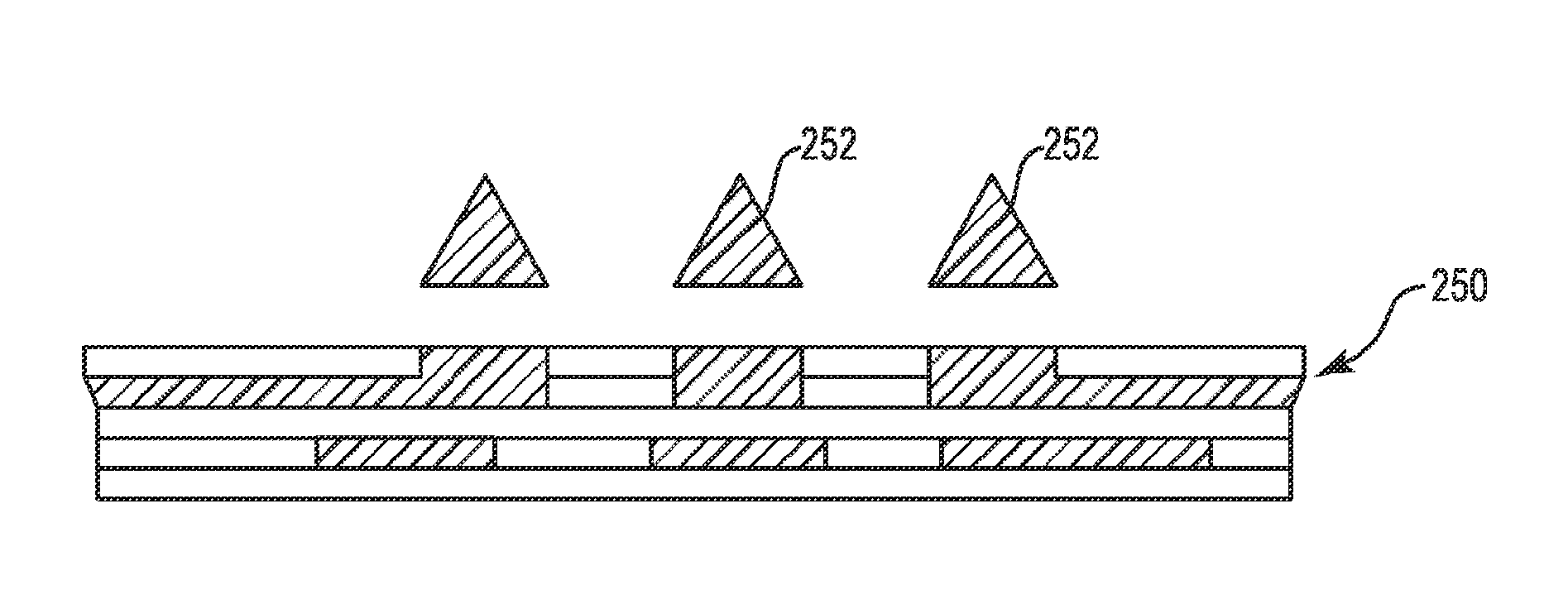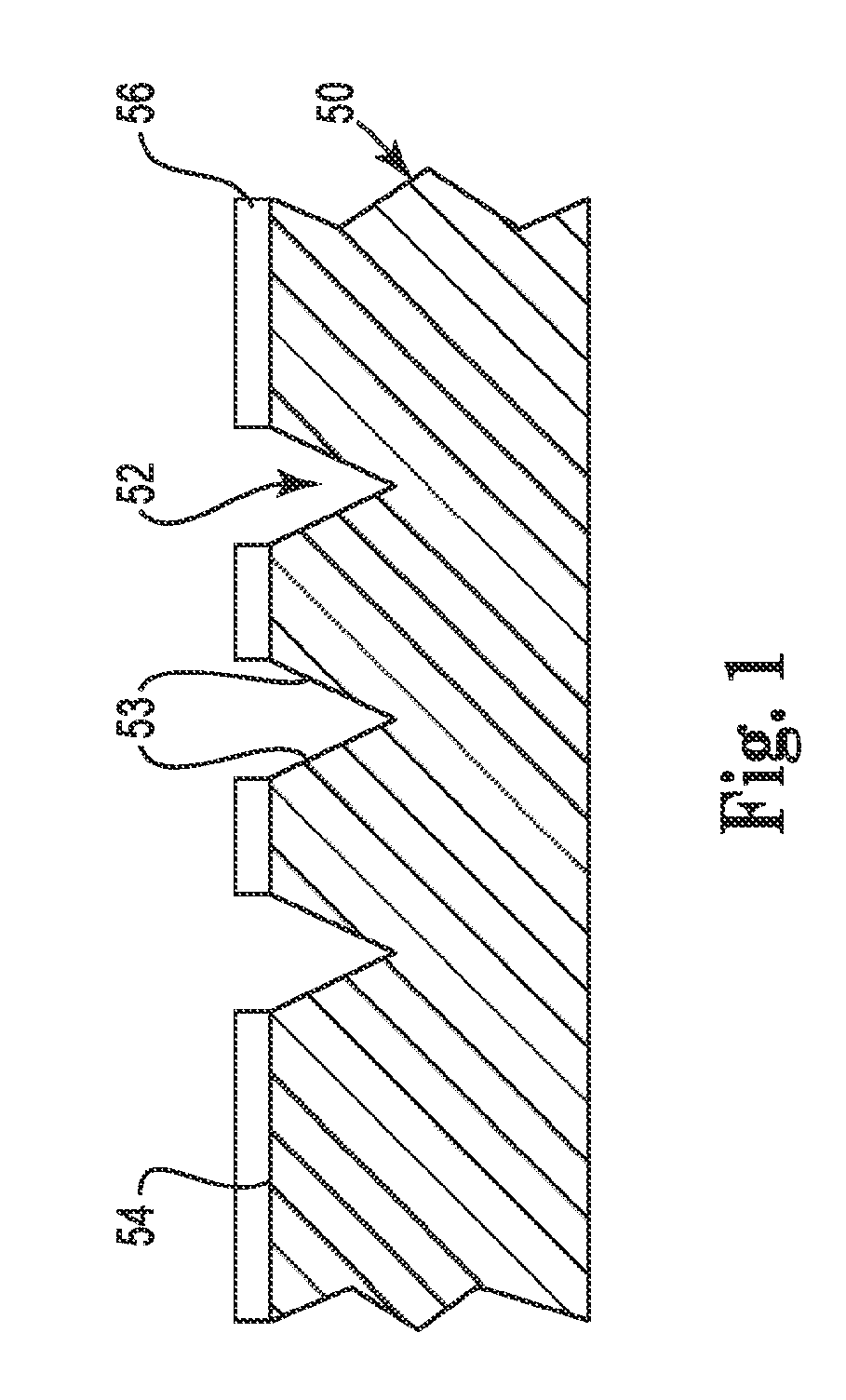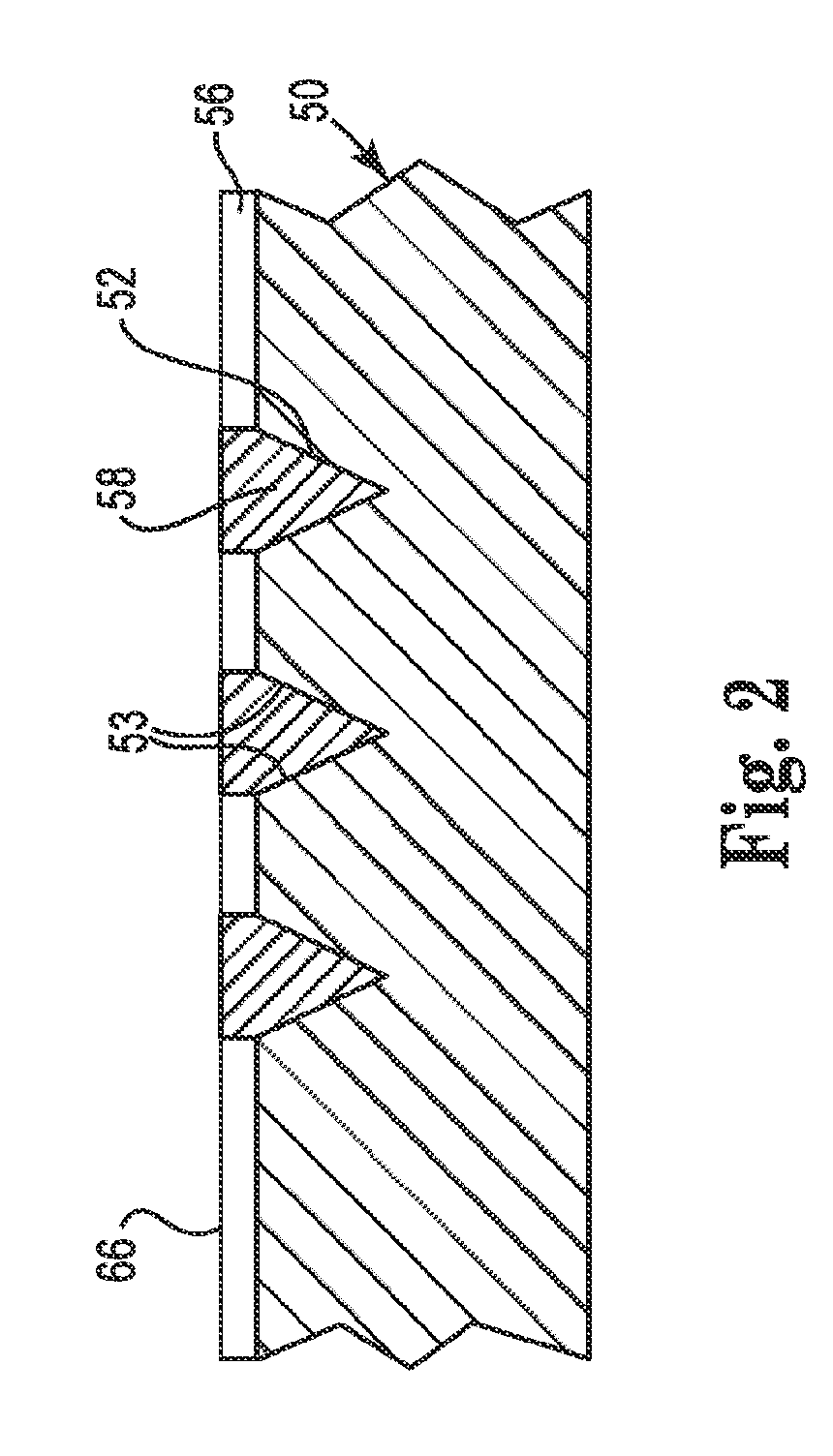Compliant wafer level probe assembly
- Summary
- Abstract
- Description
- Claims
- Application Information
AI Technical Summary
Benefits of technology
Problems solved by technology
Method used
Image
Examples
Embodiment Construction
[0042]The present disclosure relates to a high performance probe assembly for testing wafer-level integrated circuits. The present probe assembly can be used with electrical devices having contact-to-contact spacing (pitch) on the order of less than about 1.0 millimeter (1×10−3 meters), and more preferably a pitch of less than about 0.7 millimeter, and most preferably a pitch of less than about 0.4 millimeter. Such fine pitch probe assemblies are especially useful for probing wafer-level integrated circuits.
[0043]FIG. 1 is a cross-sectional view of a fixture 50 useful in making a probe assembly, in accordance with an embodiment of the present disclosure. The fixture 50 can include a plurality of cavities 52 in a first surface 54. The locations of the cavities 52 are arranged in an array that corresponds to terminals on a wafer-level IC device (see e.g., FIG. 6). The cavities 52 can be formed using a variety of techniques, such as molding, machining, printing, imprinting, embossing, ...
PUM
| Property | Measurement | Unit |
|---|---|---|
| Flexibility | aaaaa | aaaaa |
| Shape | aaaaa | aaaaa |
| Electrical conductor | aaaaa | aaaaa |
Abstract
Description
Claims
Application Information
 Login to View More
Login to View More - R&D
- Intellectual Property
- Life Sciences
- Materials
- Tech Scout
- Unparalleled Data Quality
- Higher Quality Content
- 60% Fewer Hallucinations
Browse by: Latest US Patents, China's latest patents, Technical Efficacy Thesaurus, Application Domain, Technology Topic, Popular Technical Reports.
© 2025 PatSnap. All rights reserved.Legal|Privacy policy|Modern Slavery Act Transparency Statement|Sitemap|About US| Contact US: help@patsnap.com



